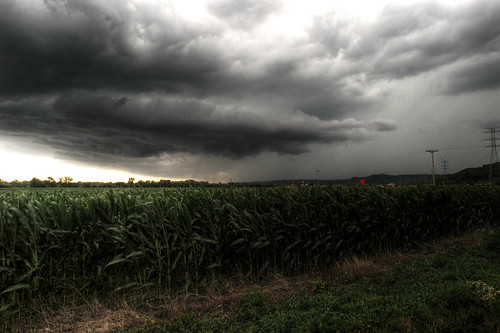
This photo was taken by an amateur Indiana Photographer from the Flickr Group "Indiana Thunderstorms." Click on the picture to check them out!
With all the bad weather and severe storm warnings we’ve been getting in Bloomington lately, we figured it would be a good idea to write out some suggestions for designing and implementing your plan in case of an emergency. The magazine Communication Briefings published an article concerning this very subject. They outline a series of steps a business could take to control a crisis situation in a way that minimizes the effect the crisis has on regular business flow. Because this model is a great resource for coming up with your disaster plan, we wanted to share it with you!
Step 1: Develop a crisis communication plan
a. Create a plan for how your employees and associates would communicate during an emergency; Start by creating an outline of rules that supercede normal procedure. Perform mock drills, and make sure to candidly critique your own readiness and performance. Designate a crisis team who will take charge during an emergency. Organize your crisis team by determining assignments each member can assist with in the disaster, including a primary spokesperson position. Make sure to compose the following materials: an up to date list of possible media contacts, federal emergency agencies, and important contacts that will need to be notified about the crisis and could help.
Step 2: Remember that perception is reality.
Remember that rumor control is critical in the business world. Do your best to manage your crisis effectively, and avoid the assumption that everyone knows you are trying your best to control the situation. Rather, assert that you are with solid public performance.
Step 3: Treat the event seriously.
When working in the public eye, keep in mind that all of your words and actions should echo the compassion you feel for any and all persons effected by the crisis. React seriously as if lives, careers, and your business are on the line, because they just might be!
Step 4: You only know what has been confirmed.
When dealing with the media in a crisis situation do not speculate about the impact of the emergency before you know what they are. When you speculate, you open the door for rumors that could hurt your business in the end. Stick to the facts
Step 5: Communicate early and often.
Like the previous step, do not make public comments until you have all of the facts. Make sure that you aren’t speculating, but early communication is just as important as accuracy in rumor prevention. As a rule of thumb: Provide as many facts as possible, even if they are little things like the square footage of the building or the number of employees that work on site.
Step 6: It ain’t over until it’s over!
Don’t assume because the story isn’t on the front page anymore that your business is in the clear. Make sure to reassure your important customers and business associates that everything is okay.
Step 7: Get back to business.
Make sure to get back to business as soon as possible. This will show customers and clients that your business won’t let a crisis like this prevent it from functioning normally. Be prepared for media. They may want to film you back at work, so make sure you are ready!
Hopefully, these steps will help you create an emergency plan, especially in case Bloomington continues to receive the crazy weather we’ve been having this spring! Stay safe and dry out there!
